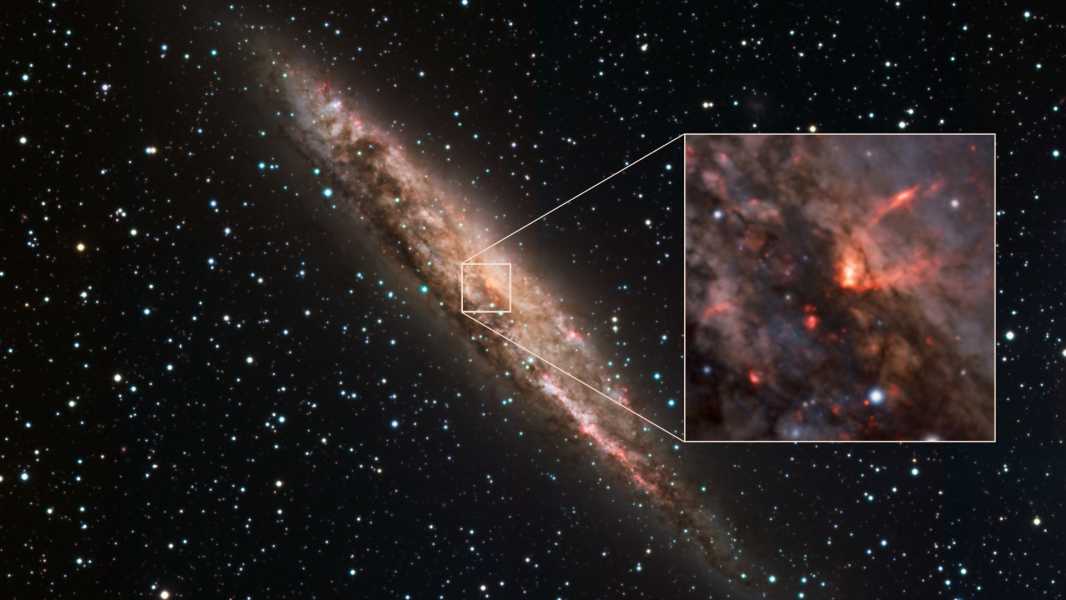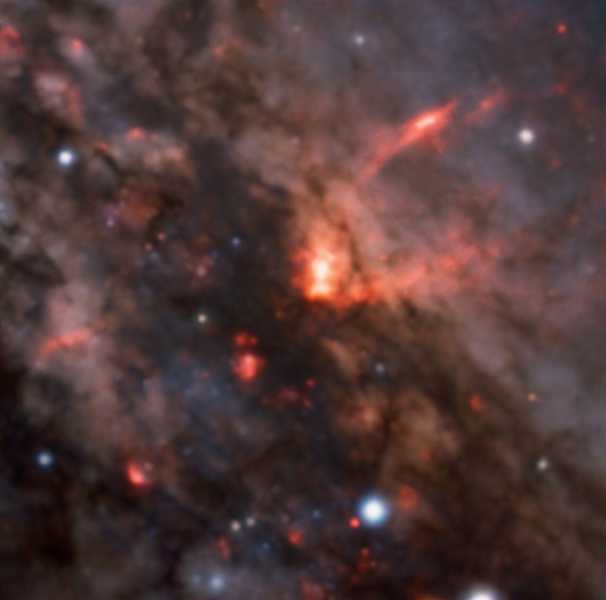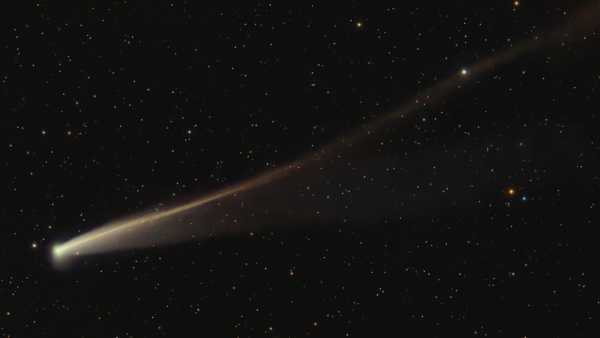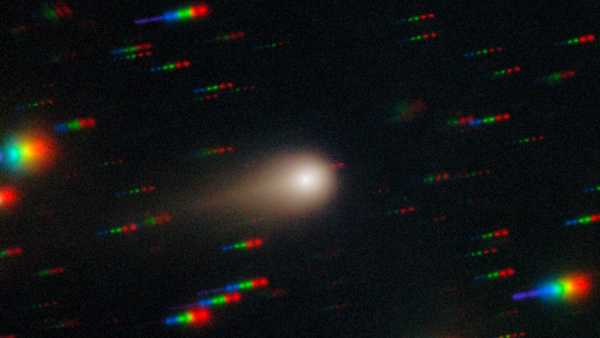
(Image credit: ESO/C. Marconcini et al.)
A distant galaxy is home to a voracious supermassive black hole that appears to be playing with its food, according to a striking new image using data from the Very Large Telescope.
A spiral galaxy called NGC 4945, over 12 million light-years from Earth, is spewing out powerful streams of material from the supermassive black hole at its centre. Astronomers using the European Southern Observatory’s (ESO) Very Large Telescope (VLT), located on Cerro Paranal in the Atacama Desert of northern Chile, have captured the active galactic nucleus and the fast-moving winds emanating from the black hole.
The image shows interstellar debris being scattered across space as a hungry black hole devours its meal. “Almost every galaxy has a supermassive black hole at its centre,” ESO said in a statement accompanying the new VLT image on 31 March. “Some, like the one in our own Milky Way, are not particularly hungry. But the black hole in NGC 4945 is a voracious one, gobbling up vast amounts of matter.”
Galactic winds, pictured here as bright, cone-shaped jets, move so fast that gas and dust can escape the galaxy and be ejected into intergalactic space before the black hole can swallow them.
“This dirty sink, contrary to the black hole's traditional reputation as an all-consuming creature, is spewing out powerful streams of material,” ESO added.

A close-up view of the active galactic nucleus of NGC 4945 and the galactic winds emanating from its supermassive black hole.
The recent VLT observations were part of a larger study of how winds move in galaxies. The MUSE data show that the galactic winds seen in NGC 4945 speed up as they move away from the central black hole and out to the edges of the galaxy. This is unusual, as galactic winds usually slow down as they move away from the galaxy.
These fast-moving winds can have a significant impact on their host galaxy, ejecting material from the galaxy and suppressing star formation.
“It also shows that more powerful black holes hinder
Sourse: www.livescience.com





